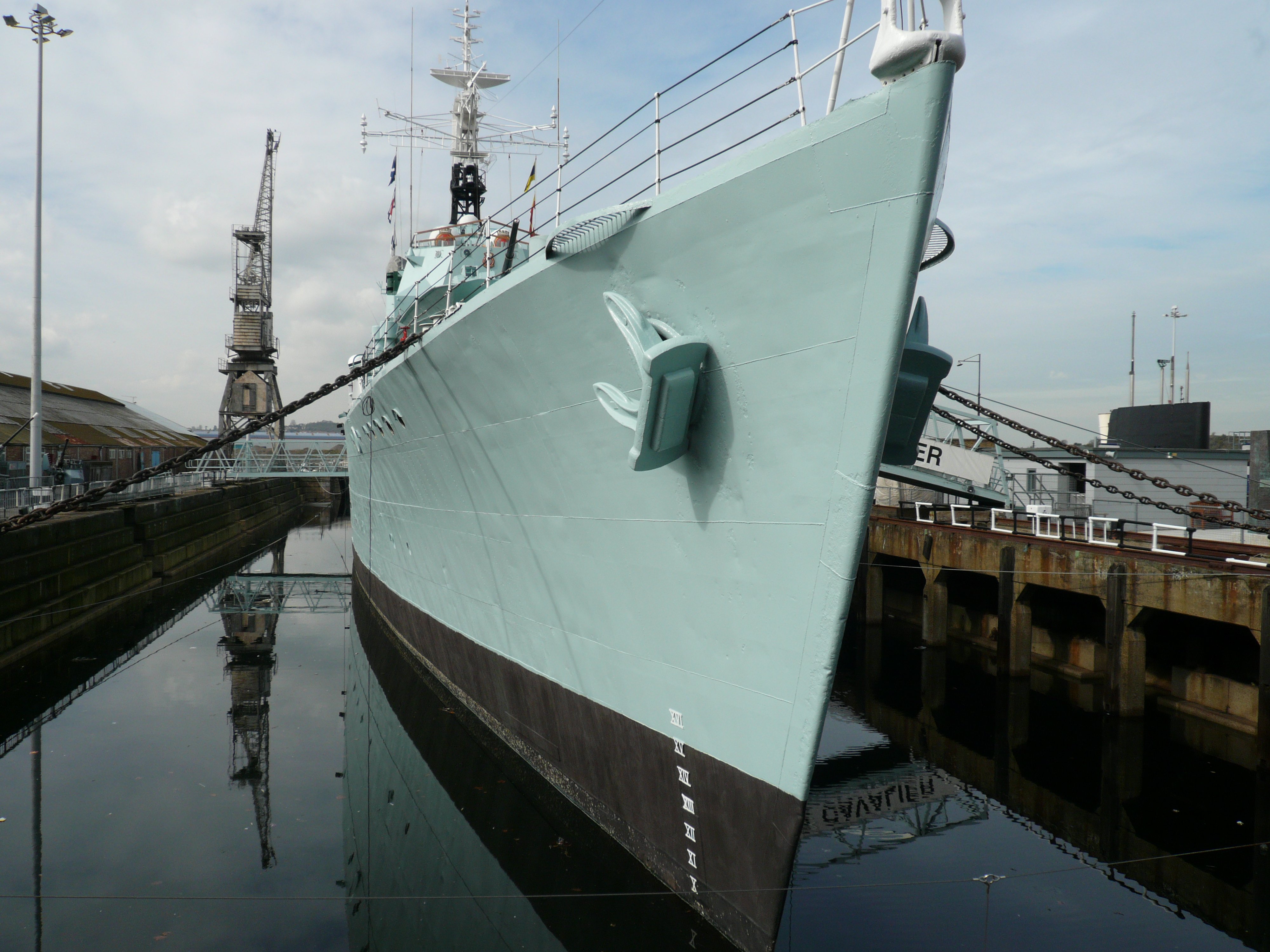


Details
Construction
Dimensions
History
HMS CAVALIER, built in 1944 by Samuel White, Cowes for the Royal Navy, is the only surviving British destroyer that took part in World War II. She took part in three Arctic operations in 1945: Selenium (against German shipping), Shred (minesweeping) and Groundsheet (mine laying). Later she reinforced Convoy RA64's escort after it came under attack on the Russian route. Post war, she was on commission in the Far East, Pacific Ocean, (where she was with the Grapple squadron at the Christmas Island nuclear test in 1957), Persian Gulf, Japan, Korea, Australia and Borneo.
Towards the end of her career CAVALIER served in Home Waters and the Mediterranean.The ship was approved for disposal in December 1971 and laid up. She was sold to the HMS CAVALIER Trust in October 1977 and towed to Southampton where she was opened to the public in August 1982. In October 1983 the ship was moved to Brighton where she remained until 1987 when South Tyneside Metropolitan Borough Council stepped in to save CAVALIER. HMS CAVALIER was finally towed to the Hawthorn Leslie yard in Tyneside. She is now open to the public at the Chatham Historic Dockyard.
We are currently seeking further information on this National Historic Fleet vessel. If you have any details about this vessel past or present, please contact us.
Key dates
-
1944
Built in Cowes, Isle of Wight by Samuel White as a destroyer and is now the only surviving destroyer that took part in World War II
-
1945
Took part in three Arctic wartime operations, Selenium (against German shipping), Shred (Minesweeping) and Groundsheet (Mine Laying) and escorted RMS QUEEN MARY and RMS QUEEN ELIZABETH carrying troops across the Atlantic
-
1945
Dispatched to the Far East to join the Pacific Fleet but the War ended before she could see any action
-
1946-1950s
Undertook various commissions in the Far East, Persian Gulf, Japan, Korea and Australia
-
1957
Fitted with “Squid” anti-submarine mortar and rejoined the Pacific Fleet
-
1960s
Participation in the Nuclear Bomb tests at Christmas Island
-
1962
Action in defence of Brunei
-
1966
Seacat missile system fitted
-
1967
Beira Patrols for the UN
-
1972
Decommissioned at Chatham
-
1977
Sold to the HMS Cavalier Trust and towed to Southampton
-
1982
Opened to the public
-
1983-1987
Vessel moved to Brighton
-
1987
Vessel moved to Hawthorn Leslie shipyard, Tyneside
-
1998
Vessel moved to Chatham under the auspices of a newly formed Trust, the HMS Cavalier (Chatham) Trust and opened to the public
Grants
-
2002-2003
The Heritage Lottery Fund awarded £490,000 fro Preservation Phase III
-
1998-1999
The Heritage Lottery Fund awarded £665,781 for the vessels Phase II Preservation
-
1998
The National Heritage Memorial Fund awarded £960,000 for restoration works in two grants
-
1998
The National Heritage Memorial Fund awarded £37,500 for feasability study.
-
1983
The National Heritage Memorial Fund awarded £25,000 for dry docking
Sources
HMS CAVALIER: Last of the World War II Destroyers, South Tyneside Borough Council
HMS CAVALIER Destroyer, HMS Cavalier Trust
Brouwer, Norman J, International Register of Historic Ships, Anthony Nelson, pp141, Edition 2, 1993
Sullivan, Dick, Old Ships, Boats and Maritime Museums, Coracle Books, 1978
Ships Monthly: HMS CAVALIER - fastest of the 'greyhounds' to be preserved at Chatham, pp33-35, June 1999
The Guardian: Maritime history campaigners yesterday received a setback, 18 February 1998
Warship World: At Hebburn, pp31, Spring 1999
Own this vessel?
If you are the owner of this vessel and would like to provide more details or updated information, please contact info@nationalhistoricships.org.uk












